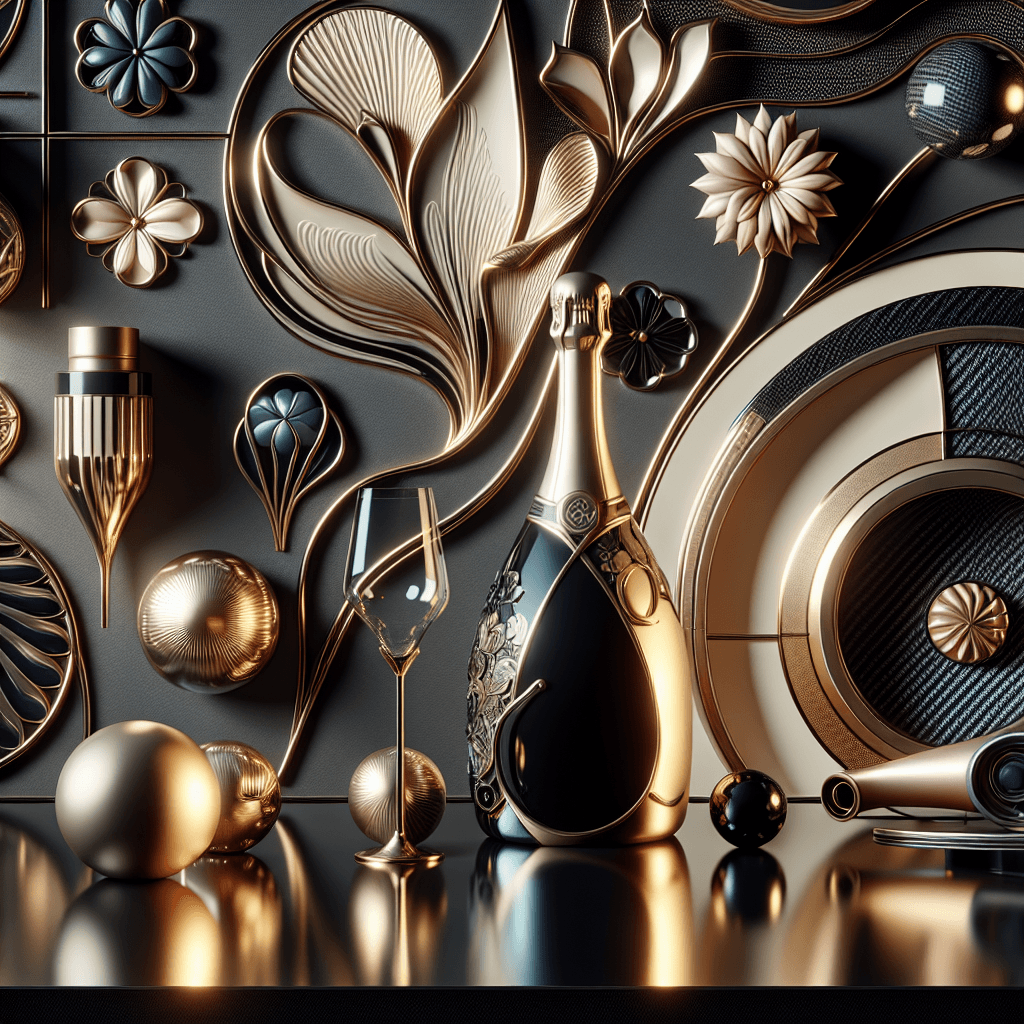How an iconic floral bottle became a status symbol
Perrier-Jouët Belle Epoque stands as a beacon of luxury, intertwining the elegance of champagne with the allure of Art Nouveau design. This iconic champagne is not just celebrated for its exquisite taste but also for its stunning presentation, which has captivated the hearts of art and wine enthusiasts alike.
- The Historical Genesis of Perrier-Jouët
- Art Nouveau and the Iconic Bottle Design
- Tasting Notes: Understanding the Elegance in the Glass
- Cultural Impact and Status Symbol
- Collecting Perrier-Jouët Belle Epoque
- The Enduring Legacy of Artistic Champagne
The Historical Genesis of Perrier-Jouët
Founded in 1811 by Pierre-Nicolas Perrier and his wife, Adèle Jouët, the Maison Perrier-Jouët quickly established itself as a producer of high-quality champagne. Located in the heart of the Champagne region in Epernay, France, the house gained recognition for its dedication to quality and innovation. The couple’s passion for viticulture and their meticulous attention to the winemaking process laid the foundation for a brand that would become synonymous with luxury and refinement.
The turning point for Perrier-Jouët came in 1902, when the house commissioned artist Emile Gallé, a leading figure in the Art Nouveau movement, to design a new bottle that would reflect the elegance and prestige of its contents. Gallé, renowned for his intricate glasswork and vibrant floral motifs, created a masterpiece that featured Japanese anemones. This design not only encapsulated the essence of Art Nouveau but also heralded a new era for the presentation of champagne.
Art Nouveau and the Iconic Bottle Design
Art Nouveau was a style of art and architecture that flourished between 1890 and 1910 throughout Europe and the United States. Characterized by its flowing lines and organic forms, it sought to break away from the historical influences of the past and embrace an entirely new aesthetic that mirrored the beauty and complexity of the natural world.
Emile Gallé’s design for the Perrier-Jouët Belle Epoque bottle perfectly captured this spirit. The white anemones set against a backdrop of emerald green not only emphasized the vibrancy and delicacy of the natural world but also visually represented the freshness and vibrancy of the champagne itself. This bottle became one of the first instances where a champagne house used the bottle as a canvas to express artistic values, setting a precedent for future collaborations between artists and luxury brands.
The choice of Art Nouveau for the bottle’s design was particularly apt given the movement’s associations with luxury and craftsmanship. It was a celebration of not just aesthetic appeal but also artisanal skill, mirroring the champagne’s own reputation for quality and attention to detail in its production.
Tasting Notes: Understanding the Elegance in the Glass
Perrier-Jouët Belle Epoque is renowned for its floral and intricate flavor profile. Each sip reveals a complex bouquet of white flowers, ripe white fruits, and subtle hints of brioche. The palate is seduced with the silkiness of the bubbles, a testament to the fine mousse that is characteristic of Perrier-Jouët’s champagnes. The finish is long and refreshing, leaving a lasting impression of elegance and sophistication.
The champagne’s quality is ensured by the meticulous selection of only the finest grapes from the Côte des Blancs vineyards, known for their Chardonnay grapes, which impart a crisp and vibrant acidity to the wine. The winemaking process involves a careful balance of tradition and innovation, with each vintage reflecting the unique characteristics of that year’s climatic conditions.
Cultural Impact and Status Symbol
Since its inception, Perrier-Jouët Belle Epoque has become more than just a champagne; it is a symbol of luxury and a staple at prestigious events and celebrations. The bottle itself is often displayed as a piece of art, transcending its functional role to become a decorative object that signifies taste and sophistication.
The association of the brand with Art Nouveau has also imbued it with a cultural significance that extends beyond the culinary sphere. It represents a harmonious blend of art and industry, a philosophy that resonates with those who appreciate both the finer things in life and the cultural movements that shape our aesthetic sensibilities.
Collecting Perrier-Jouët Belle Epoque
Collectors of fine champagnes and luxury goods often seek out limited editions of Perrier-Jouët Belle Epoque, not only for their exquisite taste but also for their artistic value. Special releases, such as the bicentenary edition or collaborations with contemporary artists, add to the allure, making each bottle a coveted item for connoisseurs and enthusiasts alike.
The act of collecting these bottles can be seen as a form of art curation, where each variant represents a different expression of the Maison’s heritage and the evolving interpretations of its classic Art Nouveau motif. This aspect of collecting highlights the intersection of art, history, and gastronomy that Perrier-Jouët has successfully captured.
The Enduring Legacy of Artistic Champagne
The legacy of Perrier-Jouët Belle Epoque is defined by its enduring appeal to both the palate and the eye. As a testament to the Maison’s commitment to beauty and quality, it continues to enchant the world with its vibrant, floral character and its stunning presentation.
For those interested in exploring more about the history and impact of Perrier-Jouët, further reading can be found through authoritative sources such as the official Perrier-Jouët website.



